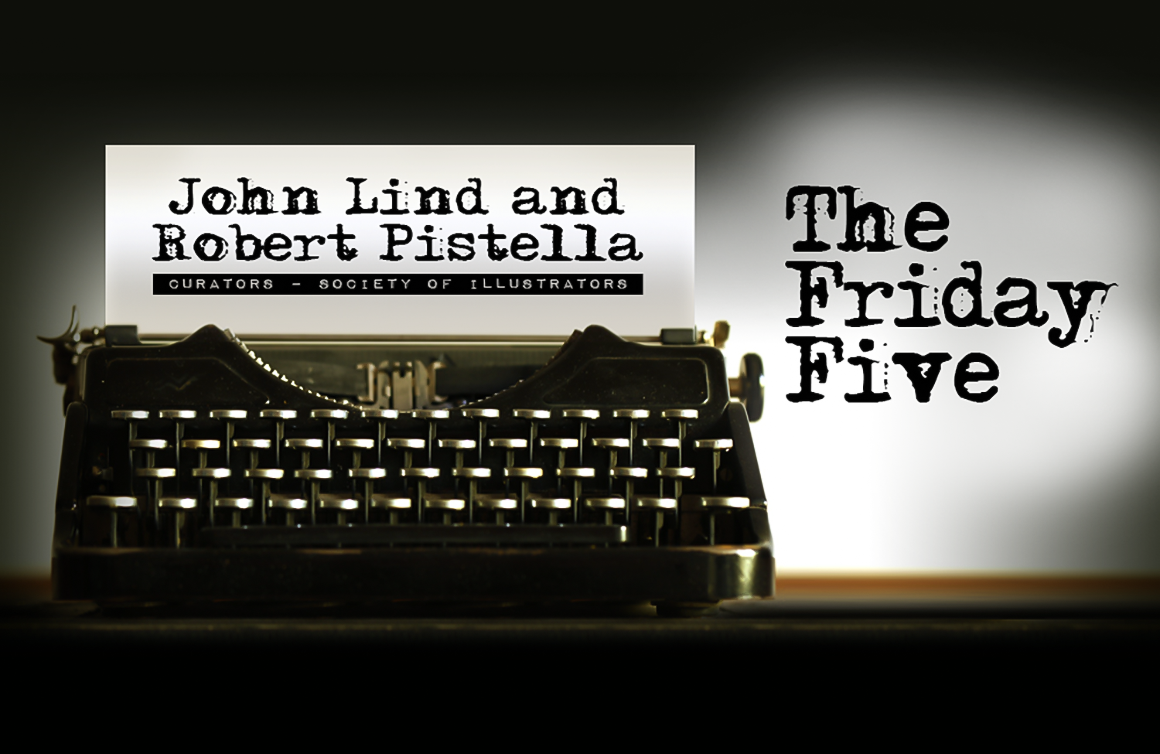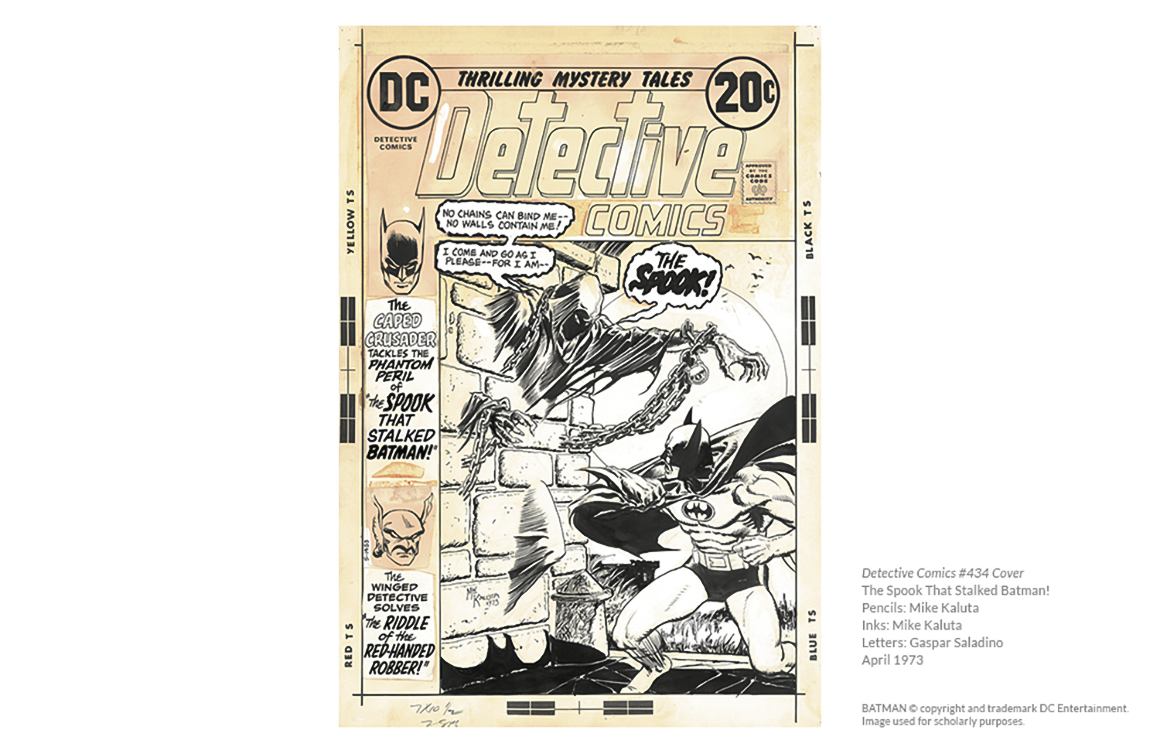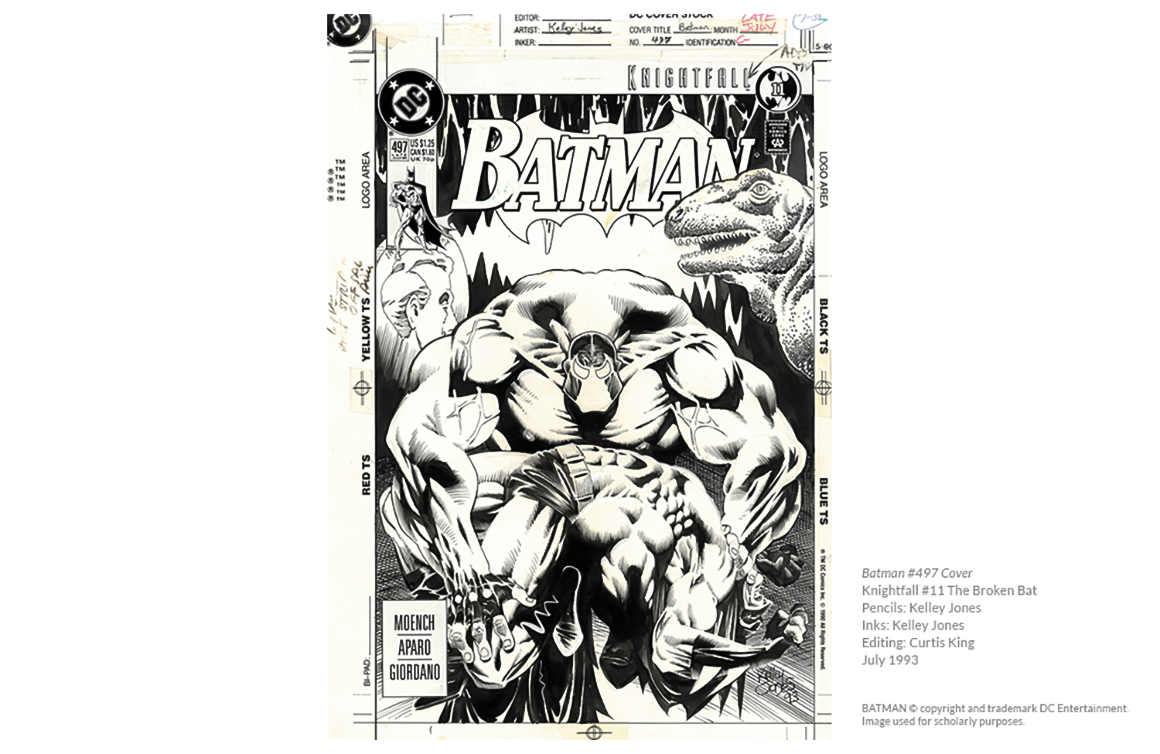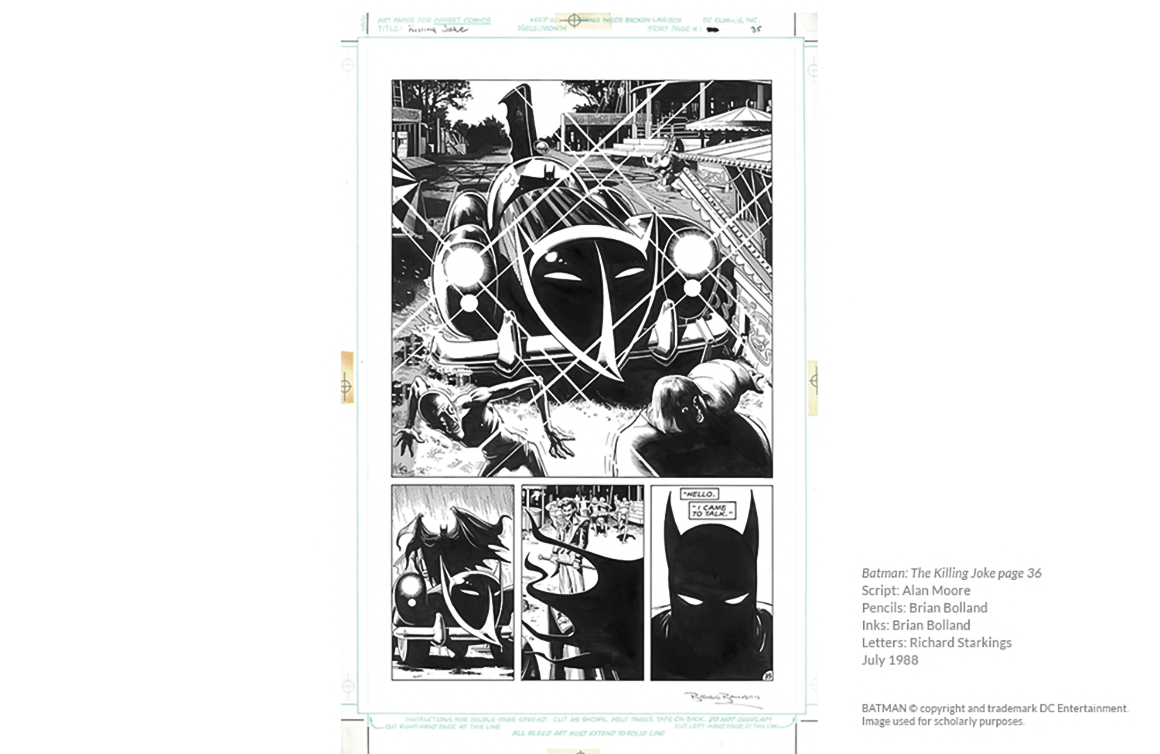What is the Society of Illustrators’ mandate?
The Society of Illustrators’ mission is to promote the art of illustration; to appreciate its history and evolving nature through exhibitions, lectures, and education; and to contribute the service of its members to the welfare of the community at large. Founded in 1901, the Society of Illustrators is the oldest nonprofit organization dedicated to the art of illustration in America. Notable past Society members include the top illustrators of their generations, such as N.C. Wyeth, Rube Goldberg, James Montgomery Flagg, Charles Dana Gibson, Norman Rockwell, Bob Peak, Bernie Fuchs, Brad Holland, Anita Kunz, and Tim O’Brien, among many, many others.
In recent years, the Society has invited curators Rob Pistella and John Lind to assemble exhibitions of original sequential art, both historic and contemporary, to help foster an appreciation of comic book illustration as a noteworthy art form, and to pay tribute to the artists behind the work.

There are four Batman-themed exhibits at the Society of Illustrators. What is the significance of four separate installations?
Presenting 80 years of work on any subject and paying tribute to the artists who contributed to it is difficult, but this is particularly true for a character with such a fabled and varied history as Batman. The Society felt the public would be best served with several concurrent and complementary shows, and allowed us to use all floors of gallery space for one subject—the first time this has been done in the history of the Society of Illustrators.
The main exhibition, “Illustrating Batman: Eighty Years of Comics and Pop Culture,” is a chronological presentation of original illustration featuring the work of dozens of illustrators and filling two gallery spaces. It includes original cover art for Batman #11(1942) all the way up to original art as recent as 2018.
The other three exhibitions originated from the collections of acclaimed graphic designer Chip Kidd. His self-proclaimed “obsession” with Batman has led to an incredible and vast archive of original Batman art and ephemera, as well as numerous illustrators who have worked on it.
One of the most interesting elements of Kidd’s collection is a series of unique cover commissions by illustrators who have drawn Batman comic books. He has also commissioned Batman cover art from a number of artists who might never be associated with Batman, including Roz Chast, Peter de Sève, and William Joyce. A selection of these, chosen by Kidd, are on display.
The MoCCA gallery at the Society showcases the 1960s Bat-Manga work of Japanese creator Jiro Kuwata, with more than 50 never-before-exhibited originals on view.
Finally, Kidd’s personal archive fills an entire gallery on its own, and includes Batman artwork by Alex Ross, Frank Miller, David Mazzucchelli, Charles Burns, Daniel Clowes, and Chris Ware.
The exhibitions run from June 12, 2019, to October 12, 2019, at the Society of Illustrators in New York City.

Batman first appeared in 1939. What makes the character and stories relevant 80 years later?
Batman is unique—he’s not a traditional superhero, as he has no powers to speak of. His classic portrayal is that of a brooding, dark, psychologically scarred man who relies on his strength and intellect, and a substantial amount of expensive technology, to help him fight crime. Batman’s alter ego, wealthy playboy Bruce Wayne, uses his personal tragedy as the driving force for developing his own moral code for Batman. This compelling backstory, combined with an instantly recognizable character design, has allowed for interesting and often surprisingly nuanced stories by the writers and illustrators who have worked on Batman over the decades.

What surprised you about Batman as you curated the exhibits?
Rob Pistella: I wasn’t so much surprised as gratified to see the tremendous variation in the depiction of the Batman, from the iconic and primitive first drawings by creator Bob Kane, to typical stories aimed at children, to the classic 1960s TV show-influenced humor, to a return to the gritty depiction by Frank Miller and Neal Adams, to Chip Kidd’s fabulous commissions by non-comic book artists.
John Lind: I think what surprised me is how the character’s return to his “Dark Knight” roots has been a constant for maintaining his strong visual identity and likely his popularity over 80 years. The 1960s TV Batman was fun and led to widespread knowledge of the character. But that Detective Comics #27 version—the original version of 1939 that evolved from the creativity of Bob Kane and Bill Finger—and then in subsequent decades, the comics of Neal Adams and Frank Miller and the films of Tim Burton and Christopher Nolan—they all returned to the original iconic design and portrayal of what is and will always be THE Batman.

What would you like people to take away from a visit to the Batman exhibits?
Rob Pistella: I hope visitors will grow to appreciate the amazing effort that the creators have put into the work we’re exhibiting. In the 1930s, ’40s, and into the ’50s, these often anonymous artists labored skillfully over the life of their career to provide their audience with monthly tales of action and morality, created with panache and love—and all for a dime or quarter! Comics are a true American art form and we are very pleased to present our exhibitions and help foster an appreciation of comic art as worthy of scholarly attention.
John Lind: I’d like those attending the exhibitions to come away educated about the art of illustration and the work that goes into producing their favorite comic books. I would also like them to enjoy this uncommon opportunity to view some incredibly rare and beautiful original artwork spanning 80 years of illustration and Batman history.

Learn more about the Society of Illustrators and their mandate to promote the art of illustration.











